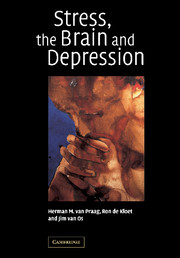Book contents
- Frontmatter
- Contents
- Preface
- 1 Diagnosing depression
- 2 Traumatic life events: general issues
- 3 Life events and depression: preliminary issues
- 4 Life events and depression: is there a causal connection?
- 5 Genetics of depression
- 6 Gene–environment correlation and interaction in depression
- 7 Monoamines and depression
- 8 Stress hormones and depression
- 9 Stress, the brain and depression
- Epilogue
- Name index
- Subject index
2 - Traumatic life events: general issues
Published online by Cambridge University Press: 15 October 2009
- Frontmatter
- Contents
- Preface
- 1 Diagnosing depression
- 2 Traumatic life events: general issues
- 3 Life events and depression: preliminary issues
- 4 Life events and depression: is there a causal connection?
- 5 Genetics of depression
- 6 Gene–environment correlation and interaction in depression
- 7 Monoamines and depression
- 8 Stress hormones and depression
- 9 Stress, the brain and depression
- Epilogue
- Name index
- Subject index
Summary
History
Cannon (1929) used the term stress to designate forces that act on the organism, disturb its homeostasis (a term he coined) and cause ‘strain’. He showed that both physical stimuli such as cold, heat or fasting, and psychological stimuli, such as exposing a cat to a barking dog, could evoke similar physiological reactions, e.g. the release of substances from the adrenal medulla, later to be identified as catecholamines.
Yet Selye (1936) is considered to be the father of stress research and is certainly the one who made that field popular. He discovered that a variety of physical stimuli such as extracts of the ovary, the kidney or any other organ, and physical stimuli that provoke cold, heat or pain, led to a predictable syndrome consisting of degeneration of lymphatic structures, ulceration of the gastrointestinal tract and increased activity of the adrenal cortex. He called this the general adaptation syndrome and considered it to be a nonspecific response, an ‘alarm reaction’ of the body, to any noxious stimulus (a phrasing later to be replaced by ‘any demand’) (Selye, 1936).
The first phase of the general adaptation syndrome was called the alarm phase and was thought to consist of two components. Directly after exposure to the stressor, homeostatic processes are disrupted and rapid changes occur in such functions as blood pressure, heart rate, circulating glucose levels and electrolyte balance.
- Type
- Chapter
- Information
- Stress, the Brain and Depression , pp. 12 - 23Publisher: Cambridge University PressPrint publication year: 2004



